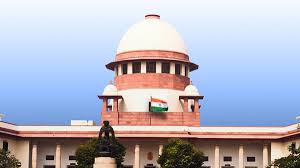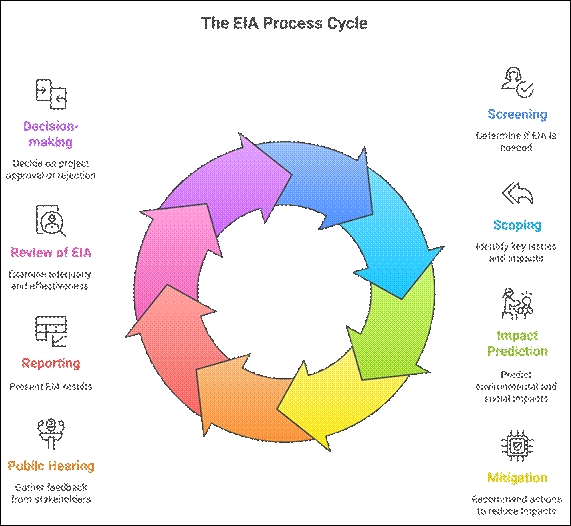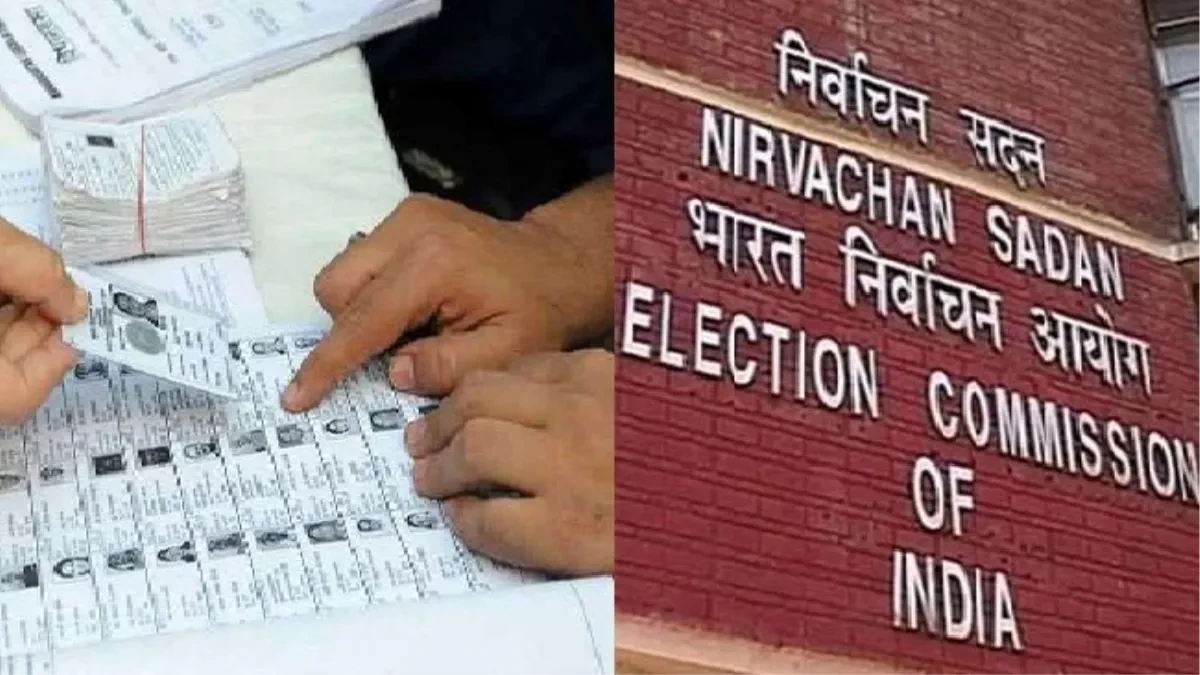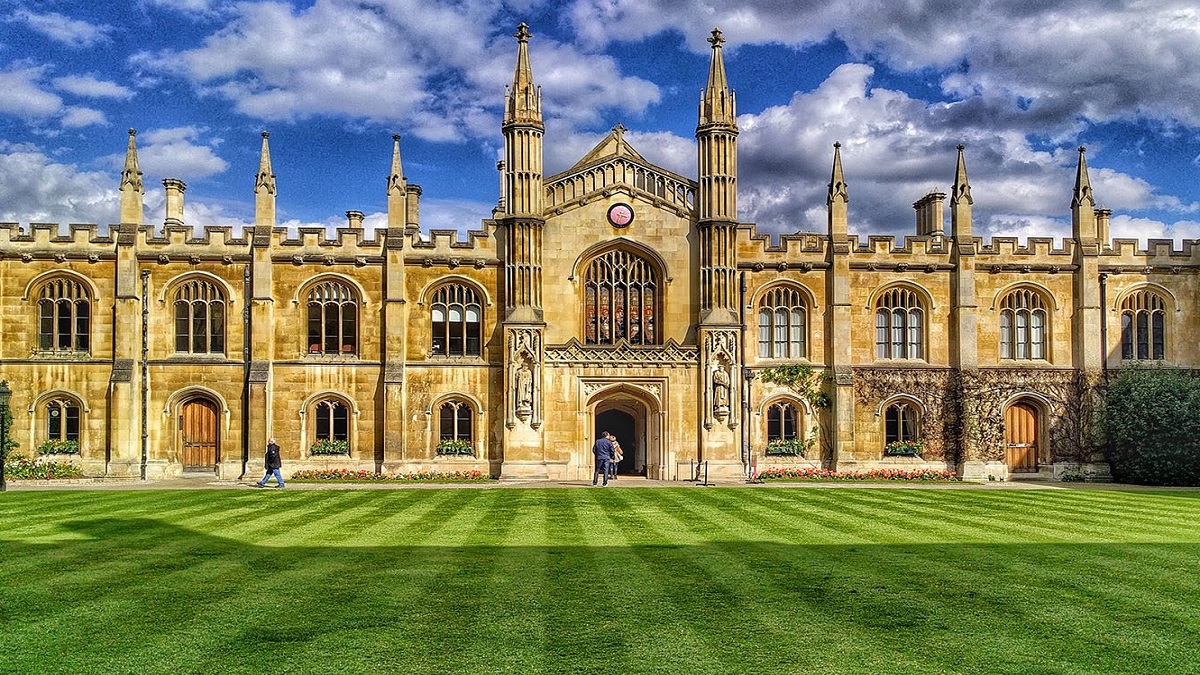- Courses
- GS Full Course 1 Year
- GS Full Course 2 Year
- GS Full Course 3 Year
- GS Full Course Till Selection
- Answer Alpha: Mains 2025 Mentorship
- MEP (Mains Enrichment Programme) Data, Facts
- Essay Target – 150+ Marks
- Online Program
- GS Recorded Course
- Polity
- Geography
- Economy
- Ancient, Medieval and Art & Culture AMAC
- Modern India, Post Independence & World History
- Environment
- Governance
- Science & Technology
- International Relations and Internal Security
- Disaster Management
- Ethics
- NCERT Current Affairs
- Indian Society and Social Issue
- NCERT- Science and Technology
- NCERT - Geography
- NCERT - Ancient History
- NCERT- World History
- NCERT Modern History
- CSAT
- 5 LAYERED ARJUNA Mentorship
- Public Administration Optional
- ABOUT US
- OUR TOPPERS
- TEST SERIES
- FREE STUDY MATERIAL
- VIDEOS
- CONTACT US
SC Struck Down Centre’s Retrospective Green Clearances
SC Struck Down Centre’s Retrospective Green Clearances
20-05-2025

SC Struck Down Centre’s Retrospective Green Clearances
What Happened?
- On May 16, 2025, the Supreme Court of India struck down a 2017 notification of Ministry of Environment, Forest and Climate Change (MoEF&CC).
- This notification allowed industries to get environmental clearance after they had already started work on their projects.
- The court also cancelled a 2021 Office Memorandum (OM) that had created rules for giving such clearances.
- The court said that these steps were illegal and harmful to the environment, and violated the fundamental rights of citizens under the Constitution.
What is Environmental Impact Assessment (EIA)?
- Environment Impact Assessment (EIA) is a study that checks how a project or activity might affect the environment.
- It helps to choose the best Environmental Management Plan for industry by comparing different plans based on their good and bad impact on nature.
- EIA looks at both the benefits and harms of a project, suggests ways to reduce the harm, and checks if any serious damage will happen even after taking steps to reduce it.
- It also helps save time, money, and resources, protects the environment, and involves people in decisions to avoid conflicts.
- History of EIA in India:
- Environmental Impact Assessment started in 1976-77 when the Planning Commission asked the Department of Science and Technology to examine the river-valley projects from an environmental angle.
- This was subsequently extended to cover those projects, which required the approval of the Public Investment Board.
- The Union Ministry of Environment and Forests (MEF), under the Environmental (Protection) Act 1986, promulgated an EIA notification making Environmental Clearance (EC) mandatory.
- Now the EIA is mandatory for expansion or modernisation of any activity or for setting up new projects.
- The MoEF notified new EIA legislation in September 2006.
- The notification makes it mandatory for various projects such as mining, thermal power plants, river valley, infrastructure (road, highway, ports, harbours and airports) and industries including very small electroplating or foundry units to get environment clearance.
- The new rule says that state governments now have to give permission for some projects, based on how big or small the project is.
- Certain activities which are permissible under the Coastal Regulation Zone Act, 1991 also require environmental clearance.
2. The EIA process:
- The Environment Impact Assessment (EIA) consists of eight steps.
- The EIA process begins with screening of the Project.
- It makes sure that time and resources used for developmental projects are impacting the environment or not.
- It also makes sure that after the EIA report is made, there is follow-up to check to ensure that the decisions and actions are being done properly or not.
- It also makes sure that after the EIA report is made, there is follow-up to check to ensure that the decisions and actions are being done properly or not.
- The eight steps of the EIA process are:
-
- Screening: It is the First stage of EIA. It determines whether the proposed project requires an EIA or not.
- Scoping: This stage identifies the key issues and impacts of the developmental projects.
- This stage also defines the boundary and time limit of the study.
- Impact Prediction: This stage of EIA identifies and predicts the likely environmental and social impact of the proposed project and evaluates the significance.
- Mitigation: This step in EIA recommends the actions to reduce and avoid the potential adverse environmental consequences of development activities.
- Public Hearing: A public hearing is conducted to gather feedback on the draft Environmental Impact Assessment (EIA) report. This process ensures transparency in decision-making and allows affected communities and stakeholders to express their views.
- Reporting: This stage presents the result of EIA in the form of a report to the decision-making body and other interested parties.
- Review of EIA: It examines the adequacy and effectiveness of the EIA report and provides the information necessary for decision-making.
- Decision-making: It decides whether the project is rejected, approved or needs further change.
- Post monitoring: This step starts after the project has begun.
- It monitors that the project does not harm the environment more than the allowed limit.
-
-
- It also checks if the steps to reduce harm are being done the same way as written in the EIA report.

- It also checks if the steps to reduce harm are being done the same way as written in the EIA report.
-
What did the 2017 Notification Say?
- The MoEF&CC gave a one-time, six-month window for industries to apply for environmental clearance.
- This applied to industries that:
- Industries which have already begun operations without prior clearance.
- Industries expanded production beyond permitted limits without clearance.
- Industries changed their product mix without obtaining prior clearance.
- This applied to industries that:
- The purpose was to bring violations under compliance rather than leaving them unregulated and unchecked.
- Prior environmental clearance is mandatory under the EIA notification, 2006, to assess a project’s impact on:
- Environment
- Natural resources
- Human health
- Social infrastructure (like schools and hospitals)
What was the Supreme Court’s (SC) Observation?
- The supreme court strongly criticized the government for:
- Giving permission after the damage is done is against environmental law.
- Development should not come at the cost of the environment.
- The government tried to protect violators by allowing them to continue harmful activities.
- The right to live in a clean and healthy environment is part of the fundamental right to life (Article 21).
- Treating violators leniently also violates the right to equality (Article 14), because law-abiding businesses are treated unfairly.
- Other Observations of SC: The government had told the Madras High Court that the 2017 rule would be used only once.
- But in 2021, it made a new set of guidelines that tried to bring back the same rule.
- This time, the government used different and smart wording. Even though it did not use the term "post-facto," the result was still the same as before.
- The court referred to two past landmark cases:
- Common Cause vs Union of India (2017)
- Alembic Pharmaceuticals vs Rohit Prajapati (2020)
- In both these cases, the court said post-facto clearances are not allowed under Indian environmental law.
- In the Alembic case, the judges called post-facto clearance an “anathema” i.e., something completely unacceptable.
What is the Supreme Court’s Verdict?
- The Supreme Court cancelled the notification of 2017 and the SOP of 2021.
- The Court banned the central government from issuing any such notification in the future and said that violators cannot be rewarded for breaking the law.
Conclusion
The Supreme Court has clearly stated that projects must get environmental clearance before starting work, not afterward. This judgment strengthens the law and protects people's right to live in a healthy environment. It also reminds the government that economic development must go hand in hand with environmental responsibility.




